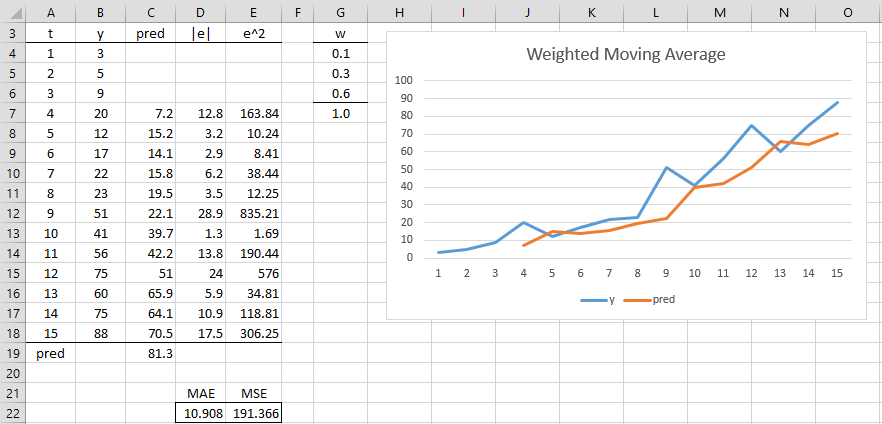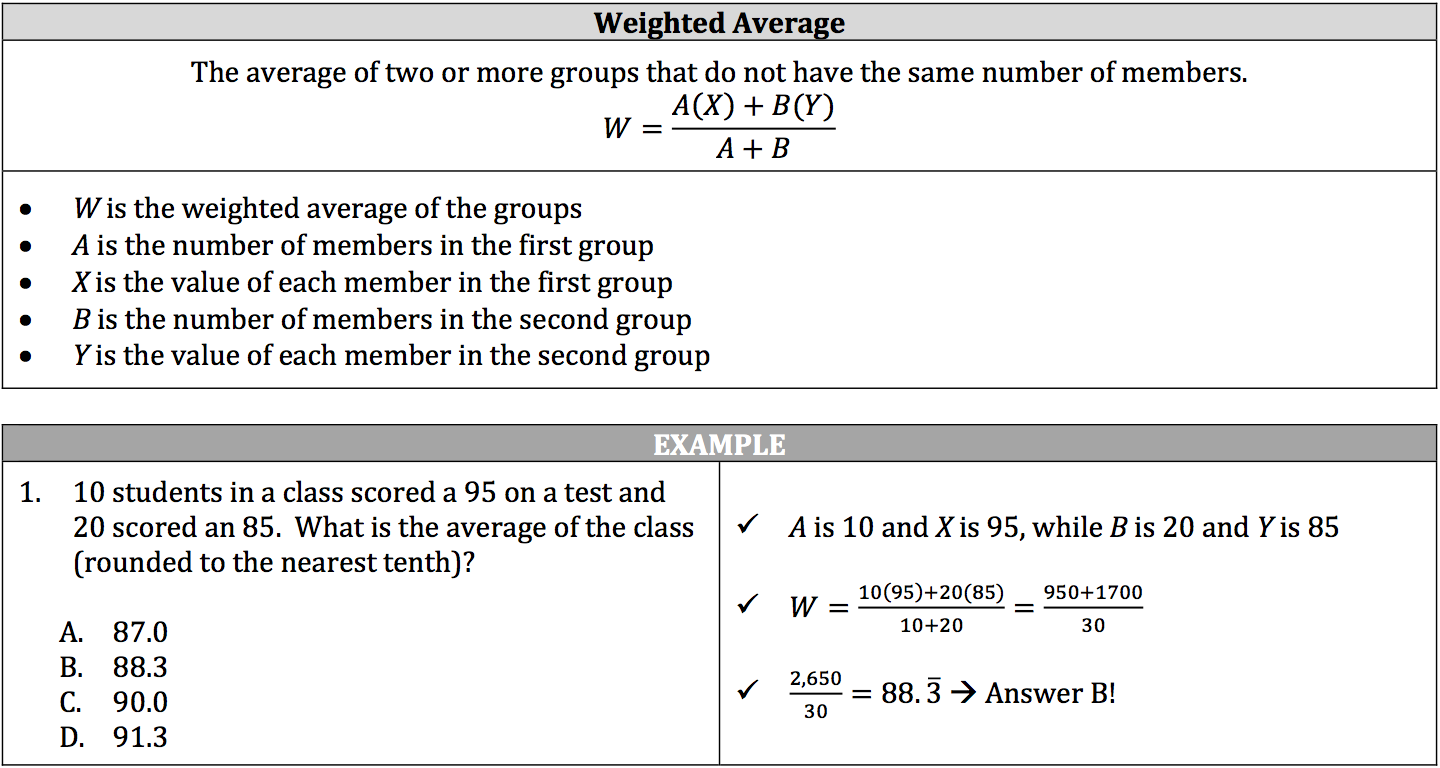
So for example, let’s say that you decide that the weight of one product is equal to 0.25, and the product’s value is 50. Education (GPA, final grades, average grades), finances (e.g., WACC – Weighted Average Cost of Capital). Thus, the weighted mean makes it possible to find the mean average student grade without knowing each student’s score. Only the class means and the number of students in each class are needed. Using a weighted average versus a normal average can convey an entirely different picture. Thus, weight values must be considered to obtain an authentic look at a student’s performance.
How Does a Weighted Average Differ From a Simple Average?
You add them all together and then divide by how many data points there are. Sometimes, weighted averages can get a bit too confusing for a pen, paper, and simple calculator. And if you’re a teacher calculating grades for dozens of students or a financial expert parsing through thousands of data points, it’s prudent to turn to Excel or similar software. A weighted average, otherwise known as a weighted mean, is a little more complicated to figure out than a regular arithmetic mean. As the name suggests, a weighted average is one where the different numbers you’re working with have different values, or weights, relative to each other. For example, you may need to find a weighted average if you’re trying to calculate your grade in a class where different assignments are worth different percentages of your total grade.
Figure out the weight of each point of data
In this calculation, the cost of goods available for sale is the sum of beginning inventory and net purchases. You then use this weighted-average figure to assign a cost to both ending inventory and the cost of goods sold. In many classes, tests, quizzes, homework assignments, labs, and participation all contribute differently to the final grade. Labs and tests, for example, may be worth more than homework assignments and participation. To calculate the weighted average, multiply each term by its weight, then divide by the sum of the weights. In these cases, calculations also tend to be easier because the weights, when they are percents, will likely add up to $100%$, which is equal to $1$.
How to Calculate Weighted Average Out of More or Less Than 100%
A weighted average, as opposed to a simple average, considers the relative weight or contribution of the items being averaged. A weighted average computation accounts for the varying numbers’ significance levels in a data collection. When calculating a weighted average, a specified weight is multiplied by each value in the data set before the final computation is completed. It is calculated by multiplying each data point by its corresponding weight, summing the products, and dividing by the sum of the weights. Finally, weighted average cost provides a clearer position of the costs of goods sold, as it takes into account all of the inventory units available for sale.
How To Calculate Weighted Average (With Examples)
- That’s where a well-utilized weighted GPA comes in handy – it shows that not only did you perform well academically but also eagerly tackled more difficult subject matter head-on.
- This could result in the company pricing goods too low, leading it to lose money on sales where it used components purchased at a high price.
- Sometimes it may be a really significant difference – like a grade difference or even whether you pass or fail your course.
- By assigning weights to each value based on their significance, weighted averages ensure that more weight is given to data points that have a greater impact on the overall result.
Breaking it down into simpler terms, your weighted GPA is essentially your average grade in all subjects with consideration given to the difficulty level of each course. But by using a weighted average, they can calculate the share price paid for each share purchased, not just the absolute price of the portfolio. It’s just summing all scores and dividing the result by the total number of observations (4 courses). Thus, once the weight of each score is taken into account, the student’s final grade is actually lower than if each score were weighted equally. Similarly to weighted sample variance, there are two different unbiased estimators depending on the type of the weights. The notion of weighted mean plays a role in descriptive statistics and also occurs in a more general form in several other areas of mathematics.
The weighted average gives each of the different quantities a specific weight. The weights are essentially numerical expressions expressed as percentages, decimals, or integers; they do not correspond to any physical units. When the numbers in a data collection are given the same weight, a simple average can be less accurate than a weighted average.
Using each feature’s relative importance as the weight value, let’s now calculate each phone model’s weighted average score. Calculating weighted averages isn’t just important in many math and finance-related fields, but can help you in your daily life. A manufacturer buys 3000 units at $2 each, 6,000 at $1.5 each, 5000 at $1.3 each, and 1200 at $1.2 each of a product. The geometric mean offers a specialized solution for scenarios involving exponential growth or decline. By taking the nth root of the product of n values, geometric means give equal weight to the relative percentage changes between values. This makes them particularly useful in finance for calculating compound interest rates or in epidemiology for analyzing disease spread rates.
The weighted average uses the volume supplied at each station as the weight value. A normal average calculation would not be useful, as it would not account for these different volumes. For example, specific weights are given to each component in grade computation to get the final grade. Therefore, your travel time to school averages 21.50 minutes for 20 days. A few real-life examples would help us better understand this concept of weighted average. That makes it beneficial for short-term trading but may also result in more false signals.

You can determine the weight of each of your data points by factoring in which numbers are the most important. For example, a business may put a heavier weight towards its net profit than its turnover. As two courses are not standard classes, they get extra points (A from Maths – 4.5 instead of 4.0, as it’s an Honors course, A- from English – 4.7 instead of 3.7, as i filed an irs return with the wrong social security number it’s an AP course). The table below shows the frequency with which he rides a certain number of minutes in a given day over the course of 28 days. The degrees of freedom of the weighted, unbiased sample variance vary accordingly from N − 1 down to 0. Therefore, data elements with a high weight contribute more to the weighted mean than do elements with a low weight.
By converting the percentages to decimals, we will have 0.25 for 25%, 0.15 for 15%, and 0.35 for 35%. We must multiply each number by its respective weights to start the solution. A weighted average, also known as a weighted mean, helps decision-making when various factors are considered and measured.
